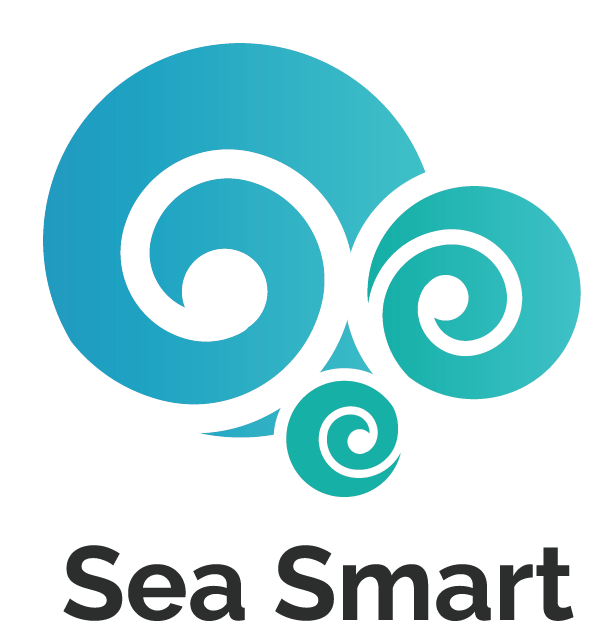What happens at a beach clean-up?
By Maria Santana, Sea Smart Intern
Have you ever stopped to look at the amount of garbage present on our beaches in Vancouver? If you look closely, you'll find one or a few pieces of litter every step you take, stuck between the sand, under the benches, close to the water – there are human remainders everywhere.
At a distance, Vancouver looks and feels like a spotless city, but having the opportunity to do a beach clean-up with Sea Smart before starting my internship there has made me open my eyes and realize that there's still a lot of work to do. A lot of this work involves educating people about the importance of being responsible for the litter we produce on these lands.
Red Fox Healthy Living Society Youth at a Sea Smart beach clean upI was working as a youth leader for Red Fox when my coworker and I took our youth group to Barnet Marine Park to learn about the impact of plastic pollution and clean the shorelines. I live in Burnaby, and that was my first time cleaning the city. I've collected other people's garbage before but never spent time doing so as an activity.
Sea Smart's educator Paloma started by playing a game where we guessed the amount of time that different materials would deteriorate. I thought that plastic took more than 500 years to decompose, but all of us were shocked to learn that plastic does not disappear, it just breaks down into microscopic pieces, and that is a problem in itself.
We did a series of games that made it fun and easy for the kids to understand the impact that the plastic we throw away can have in our oceans, and consequently, in their future. At thirteen years old, they quickly grasped how plastic can impact their future and the future of those who come after them. They understood that it was an aggravated problem.
It all started to sink in when we divided ourselves into groups to begin collecting litter. Each of us had gloves, a trash picker, a specific compartment for the cigarette butts, and a bucket for garbage and recycled material. The kids seem excited during the clean-up, but they were often expressing how disappointed they were that people left so much waste behind.
Even though I led the group with my coworker, I felt like everything I was learning was new to me. Looking for garbage and seeing plastic wrapped around leaves, stuck between rocks and flowers, or close to the water was something that I never really saw because I hadn't taken the time to clean open areas, and I could tell that the kids were learning a lot.
In two hours, we collected 560 cigarettes butts and almost 2kg of garbage among six people. It made me think about how much we would have collected if we had done this on a beach closer to downtown like English Bay. Marine Barnet Park seemed clean until you started looking down, which is different from an extremely popular English Bay. There, we could have collected that amount of litter in less than an hour.
The beach clean-up made me realize that there's way more work to do than I thought. There's a lot of information that needs to be shared for people to change their habits and realize how much impact their actions have on the environment and other beings' lives.
On our way back, when my coworker and I were driving the kids, they talked about how they will get together to clean up their neighbourhoods, which was proof that all learning can be fun and impactful if done interactively and thoughtfully.
Paloma changed these kids' perspectives on plastic use, which is a big step towards real change. It makes me feel accomplished to intern for such an important organization, and I've been learning new essential things every day as we all did at the beach clean-up.
Thank you, Sea Smart!
Interested in participating in a beach cleanup? Book a field trip for your class, or as a team-building exercise with your coworkers! Don’t have a big group to go with? Get your solo or small team clean-up checklist from the Great Canadian Shoreline Cleanup.


